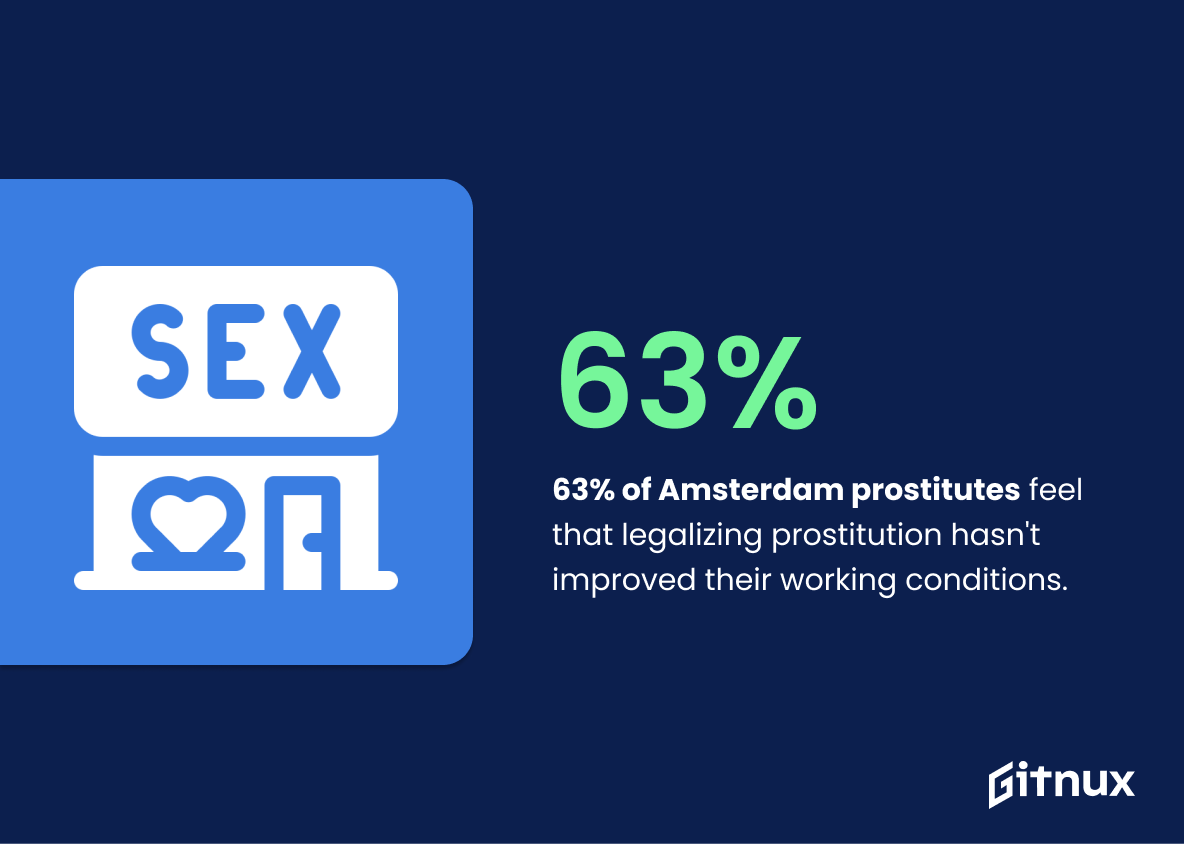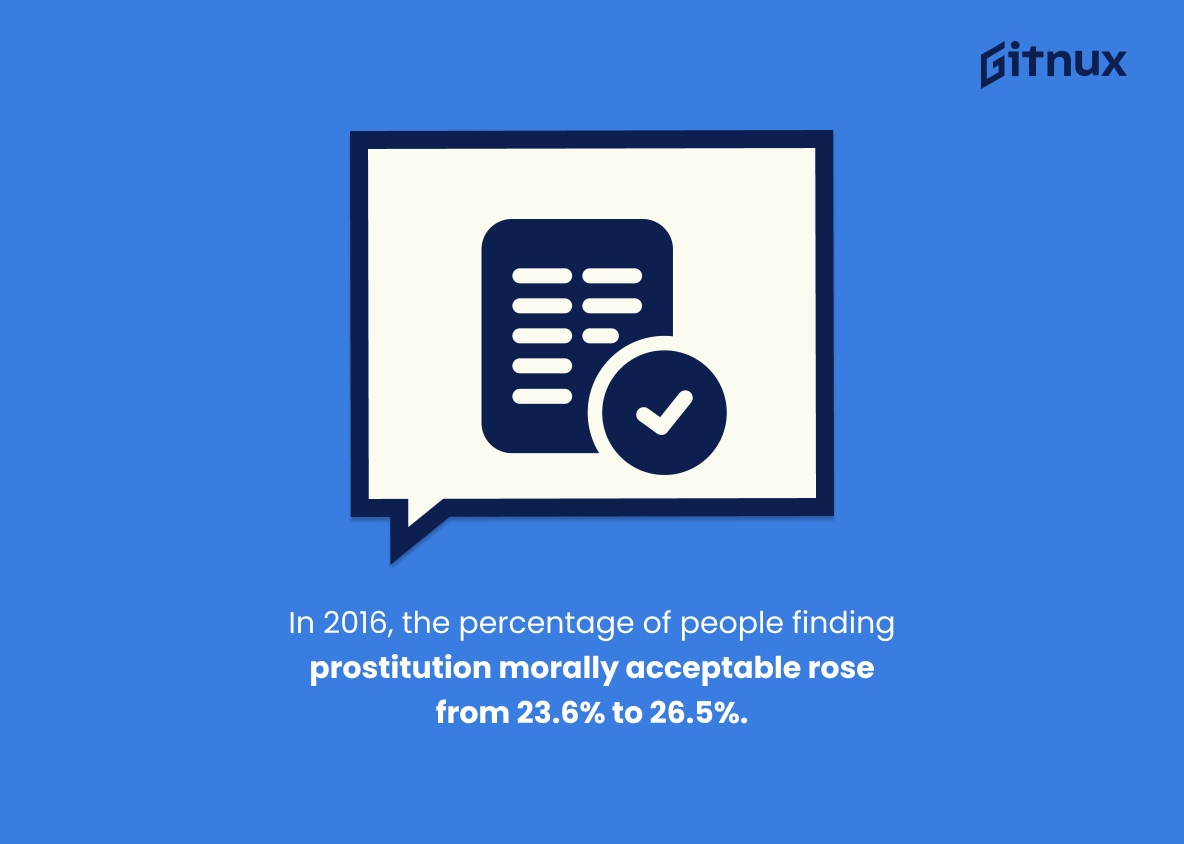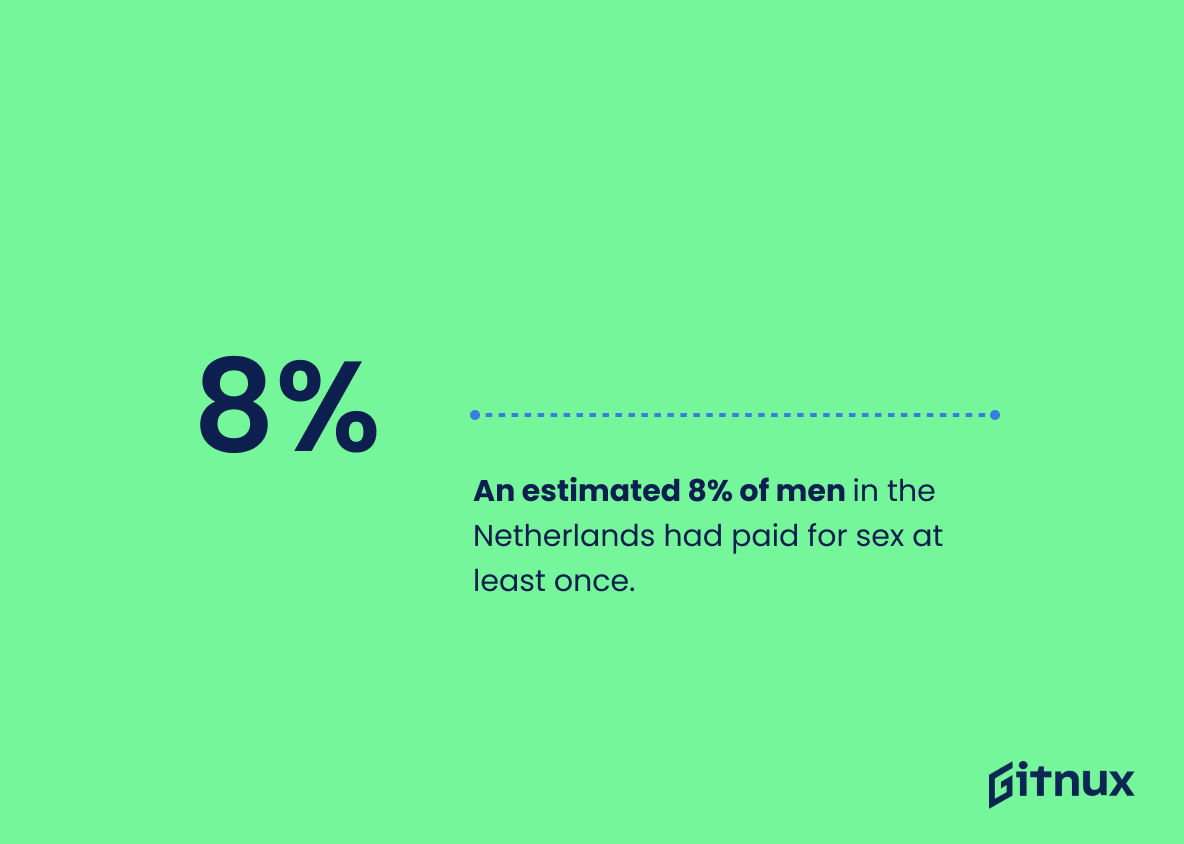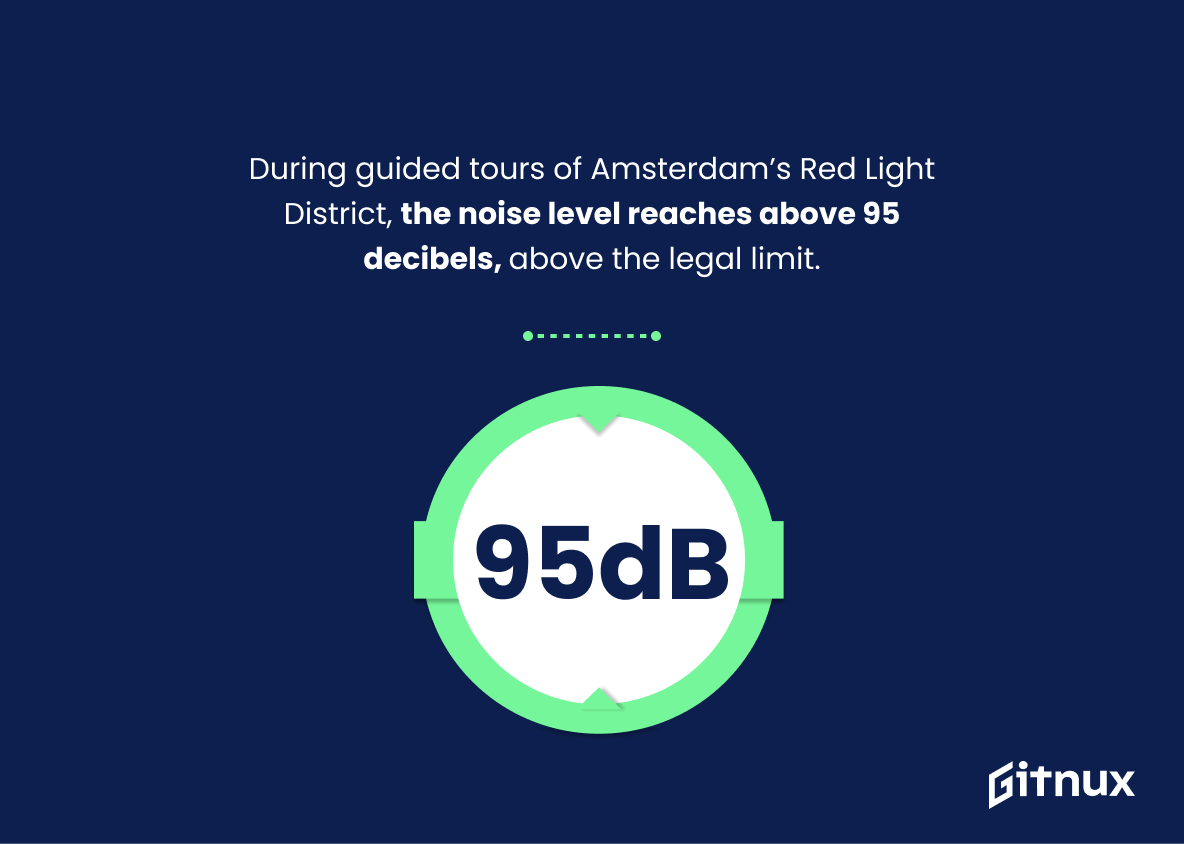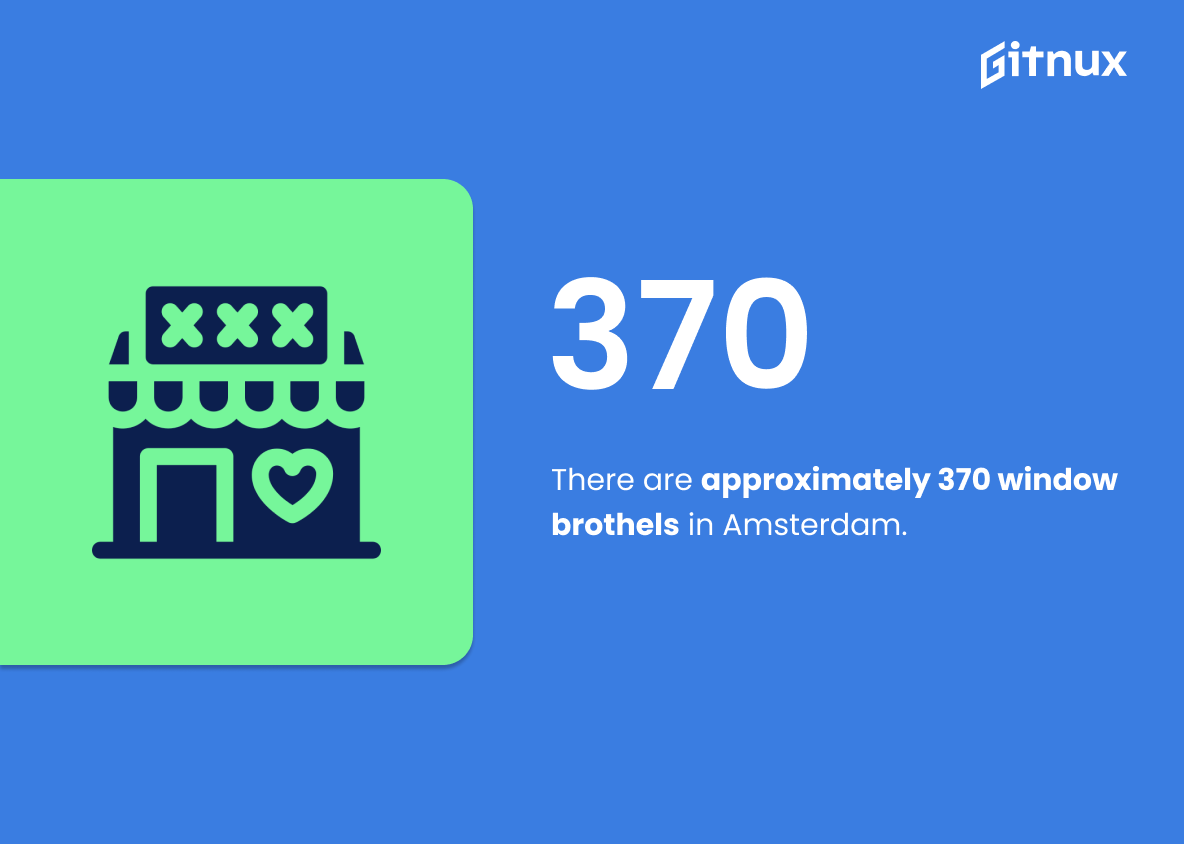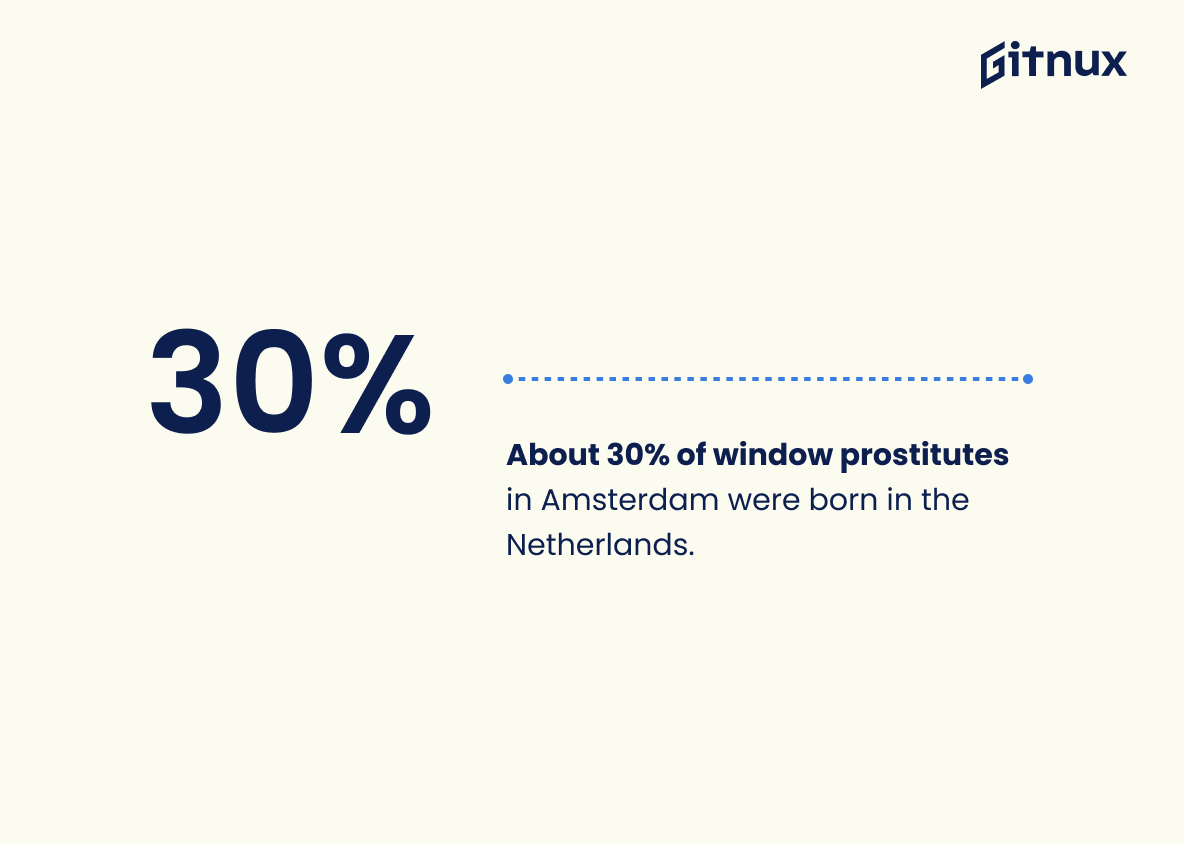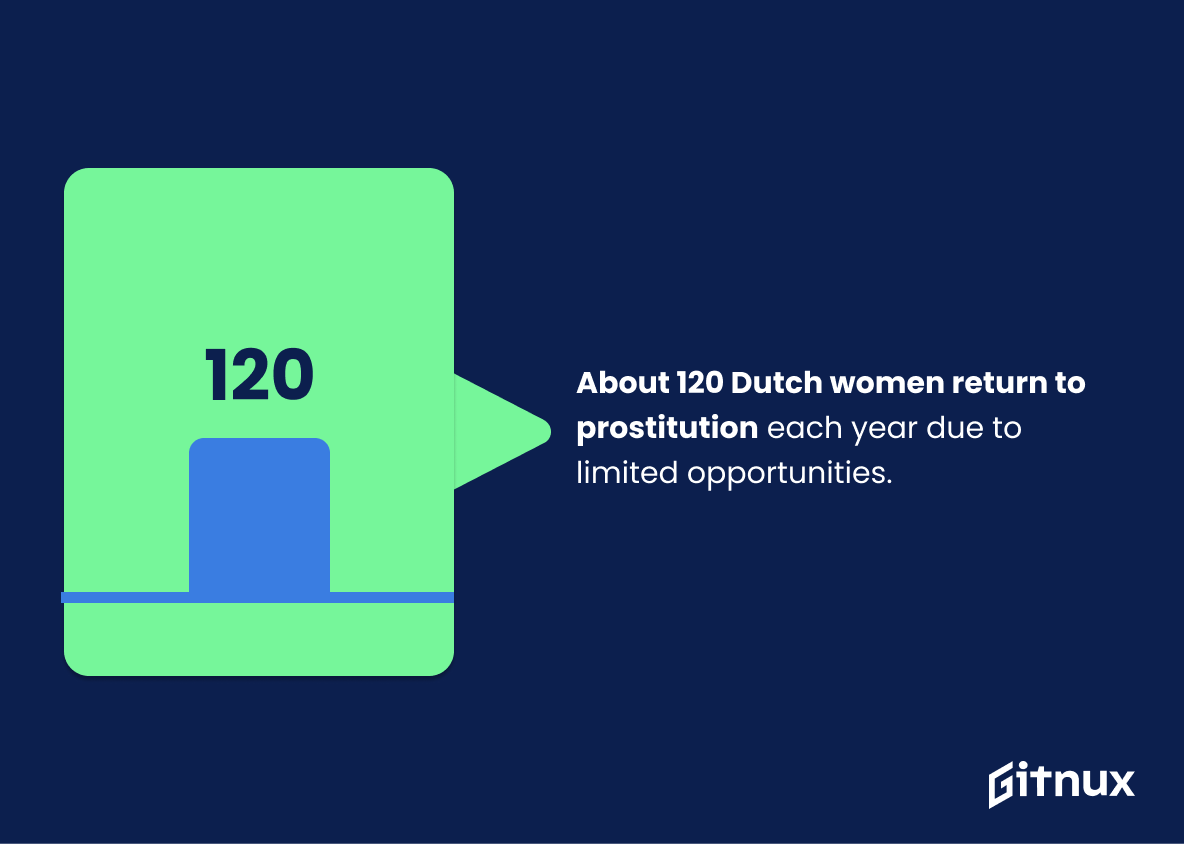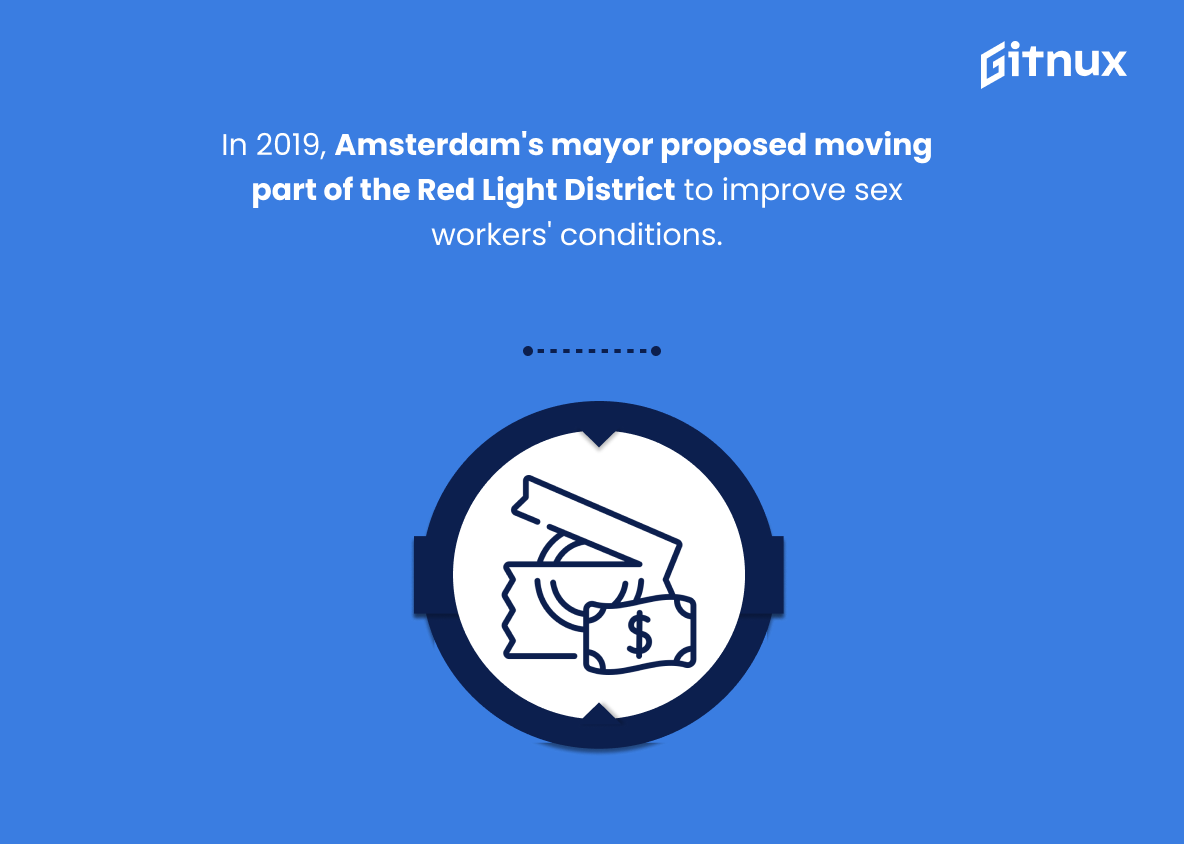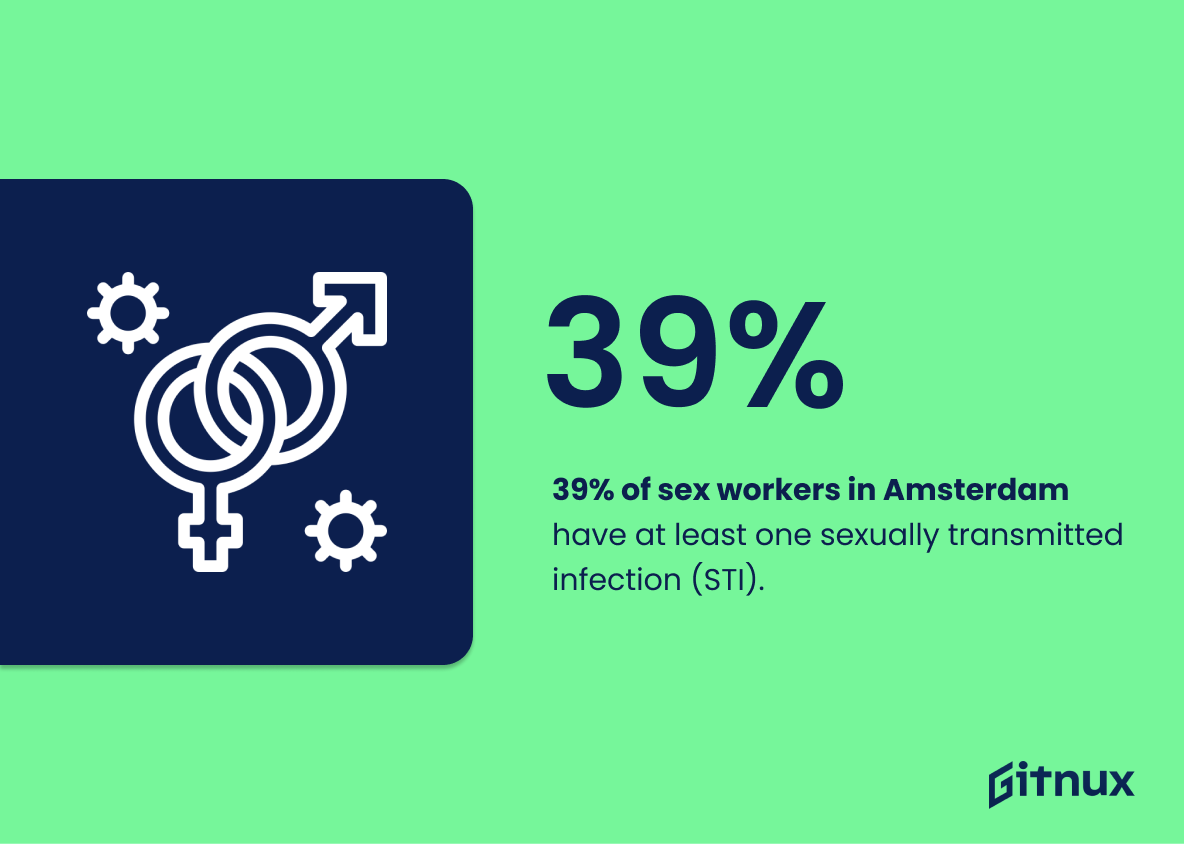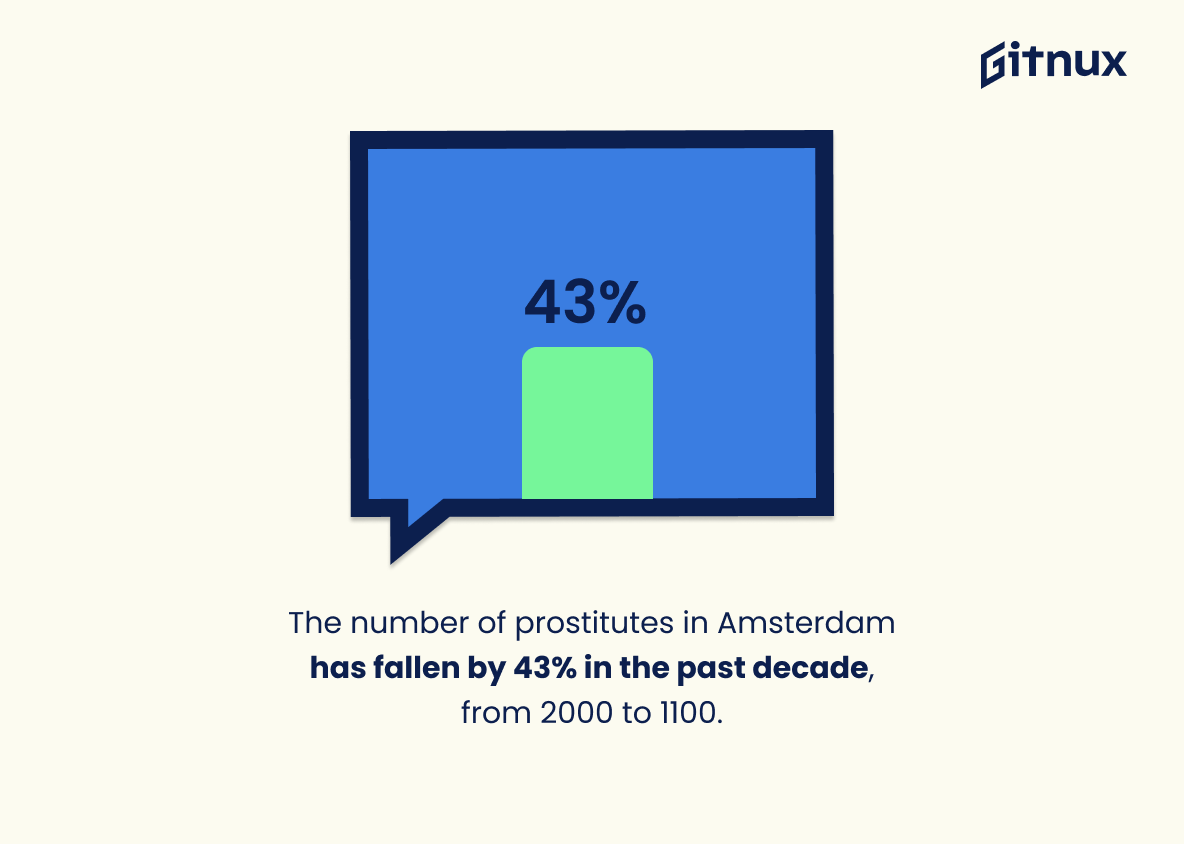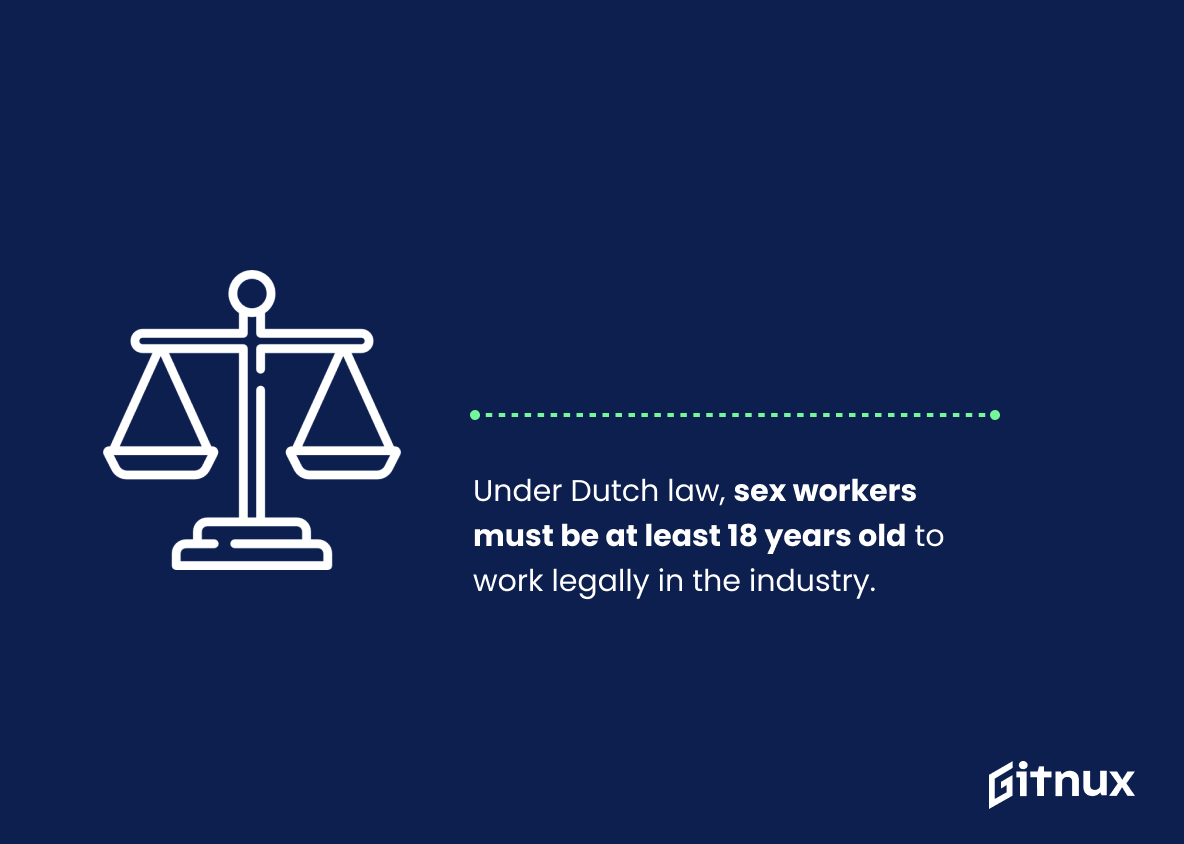Prostitution is a complex and controversial topic, especially in the Netherlands. This blog post will explore some of the statistics related to prostitution in Amsterdam, one of Europe’s most popular tourist destinations. We’ll look at how many prostitutes work in Amsterdam and other parts of the Netherlands; where they come from; their working conditions; revenue generated by prostitution; public opinion on it; human trafficking for sexual exploitation connected with it; tourists visiting its Red Light District daily, as well as window brothels located there. Finally we’ll discuss recent proposals aimed at improving sex workers’ rights and safety while reducing overcrowding in this area.
Prostitution In Amsterdam Statistics Overview
63% of prostitutes in Amsterdam believe that the legalization of prostitution has not improved their working conditions.
This statistic is a powerful indicator of the reality of the situation for prostitutes in Amsterdam. It shows that despite the legalization of prostitution, the working conditions for these individuals have not improved. This statistic is an important piece of evidence that can be used to illustrate the need for further action to improve the lives of prostitutes in Amsterdam.
In 2016, the percentage of people viewing prostitution as morally acceptable increased from 23.6% to 26.5%.
This statistic is significant in the context of a blog post about Prostitution in Amsterdam Statistics because it indicates a shift in public opinion. It suggests that more people are beginning to view prostitution as morally acceptable, which could have implications for the way prostitution is regulated in Amsterdam. This could lead to changes in the laws and regulations surrounding prostitution in the city, as well as the way it is perceived by the public.
An estimated 8% of men in the Netherlands had paid for sex at least once.
This statistic is a telling indication of the prevalence of prostitution in the Netherlands, particularly in Amsterdam. It highlights the fact that a significant portion of the male population has engaged in the purchase of sex services, demonstrating the extent to which prostitution has become normalized in the country. This statistic is an important factor to consider when discussing the impact of prostitution in Amsterdam and the Netherlands as a whole.
95% of human trafficking victims in the Netherlands are women.
This statistic is a stark reminder of the gender inequality that exists in the Netherlands when it comes to human trafficking. It highlights the fact that women are disproportionately affected by this heinous crime, and that more needs to be done to protect them. It also serves as a reminder that the issue of prostitution in Amsterdam is not just a matter of personal choice, but a symptom of a much larger problem.
During guided tours of Amsterdam’s Red Light District, the noise level reaches above 95 decibels, above the legal limit.
This statistic is a stark reminder of the reality of the Red Light District in Amsterdam. It highlights the fact that the area is often a loud and chaotic place, with noise levels that exceed the legal limit. This serves as a reminder that prostitution in Amsterdam is not a glamorous or romanticized activity, but rather a loud and often chaotic environment. This statistic is an important reminder of the realities of prostitution in Amsterdam and should be taken into account when discussing the topic.
There are approximately 370 window brothels in Amsterdam.
This statistic is a telling indication of the prevalence of prostitution in Amsterdam. It serves as a stark reminder of the reality of the sex industry in the city, and the sheer number of window brothels speaks to the magnitude of the problem.
The number of registered brothels in Amsterdam decreased from 155 in 2000 to around 76 in 2013.
This statistic is a telling indication of the changing landscape of prostitution in Amsterdam. It shows that the number of registered brothels has decreased significantly over the past 13 years, suggesting that the city is taking steps to reduce the prevalence of prostitution in the area. This is an important piece of information to consider when discussing the current state of prostitution in Amsterdam, as it provides insight into the city’s efforts to address the issue.
About 30% of window prostitutes in Amsterdam were born in the Netherlands.
This statistic is significant in understanding the scope of prostitution in Amsterdam, as it reveals that a significant portion of the window prostitutes in the city are native to the Netherlands. This indicates that prostitution is not only an issue that affects foreign nationals, but is also a problem that is impacting the local population. This information is essential in understanding the full scope of the issue and in developing effective strategies to address it.
Approximately 120 Dutch women who quit prostitution return to it annually due to the lack of opportunities.
This statistic serves as a stark reminder of the lack of opportunities available to those who have left prostitution in Amsterdam. It highlights the need for more support and resources to be made available to those who are looking to transition out of the industry, as well as the need for more education and awareness around the realities of prostitution in the city.
The mayor of Amsterdam in 2019 announced a proposal to relocate part of the Red Light District to reduce overcrowding and improve sex workers’ conditions.
This statistic is a testament to the Amsterdam mayor’s commitment to improving the lives of sex workers in the city. By proposing to relocate part of the Red Light District, the mayor is taking a proactive step to reduce overcrowding and create a safer environment for those working in the industry. This is a significant move that speaks to the city’s dedication to protecting the rights of sex workers and ensuring their safety.
39% of sex workers in Amsterdam have at least one sexually transmitted infection (STI).
This statistic is a stark reminder of the risks associated with prostitution in Amsterdam. It highlights the need for greater awareness and education around sexual health, as well as the need for improved access to healthcare and support services for sex workers in the city. It also serves as a warning to those considering engaging in the sex trade in Amsterdam, that they should take the necessary precautions to protect their health and safety.
The number of prostitutes in Amsterdam has decreased by 43% in the last decade, from 2000 to 1100.
This statistic is a powerful indicator of the progress being made in Amsterdam to reduce the prevalence of prostitution. It shows that the city is taking steps to address the issue, and that those steps are having a positive effect. This statistic is an important part of the overall picture of prostitution in Amsterdam, and it is essential to understanding the current state of the city.
Under Dutch law, sex workers must be at least 18 years old to work legally in the industry.
This statistic is of paramount importance when discussing Prostitution in Amsterdam Statistics, as it serves as a reminder that the industry is regulated and that the safety of those involved is taken seriously. By ensuring that all sex workers are of legal age, the Dutch government is protecting them from exploitation and abuse. This statistic is a testament to the commitment of the Dutch government to ensure that the industry is conducted in a safe and responsible manner.
Conclusion
The statistics presented in this blog post demonstrate the complexity of prostitution in Amsterdam. It is clear that while there are many people who benefit from the industry, it also has a negative impact on those involved and their surrounding environment. Approximately 25,000 prostitutes work in the Netherlands with around 1,000 working daily in Amsterdam’s Red Light District alone. The majority of these workers come from Eastern Europe, Africa and Asia and generate an estimated €660 million annually for the country as a whole. Despite its legalization over two decades ago, 63% of sex workers still believe that conditions have not improved since then; however public opinion towards prostitution appears to be slowly shifting with 26.5% viewing it as morally acceptable compared to 23.6% just four years prior.
In addition to providing insight into how much money is generated by prostitution each year within Holland’s borders, data was collected regarding consumer habits which revealed 8% of men had paid for sex at least once whilst human trafficking affects an estimated 1,320 victims annually – 95% being women or girls – due largely to tourists visiting Amsterdam’s Red Light District where noise levels exceed legal limits despite only having 370 window brothels left after 155 were closed down between 2000-2013 (30 percent staffed by Dutch nationals). Furthermore 39 percent tested positive for STIs indicating inadequate health care provision alongside 33 percent reporting sexual assault during 2015 surveys conducted amongst female employees leading Mayor Femke Halsema proposing relocation plans last year so as improve safety standards across all areas associated with such activities including age restrictions set at 18+.
References
0. – https://www.www.bmj.com
1. – https://www.www.vice.com
2. – https://www.www.medium.com
3. – https://www.www.emerald.com
4. – https://www.www.reuters.com
5. – https://www.www.researchgate.net
6. – https://www.dutchreview.com
7. – https://www.www.government.nl
8. – https://www.www.tandfonline.com
9. – https://www.www.nlplatform.com
10. – https://www.www.amsterdamtourist.info
